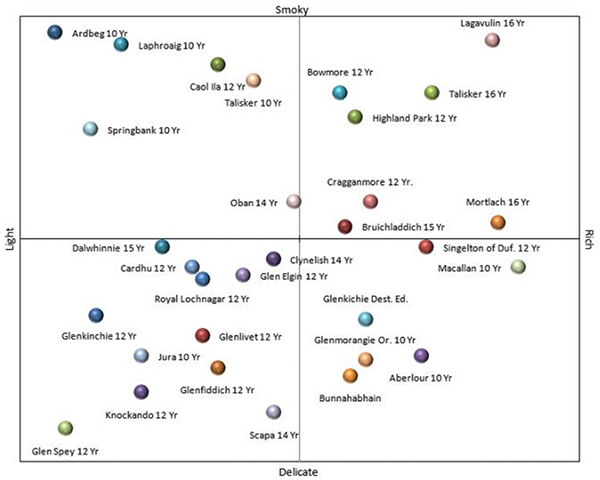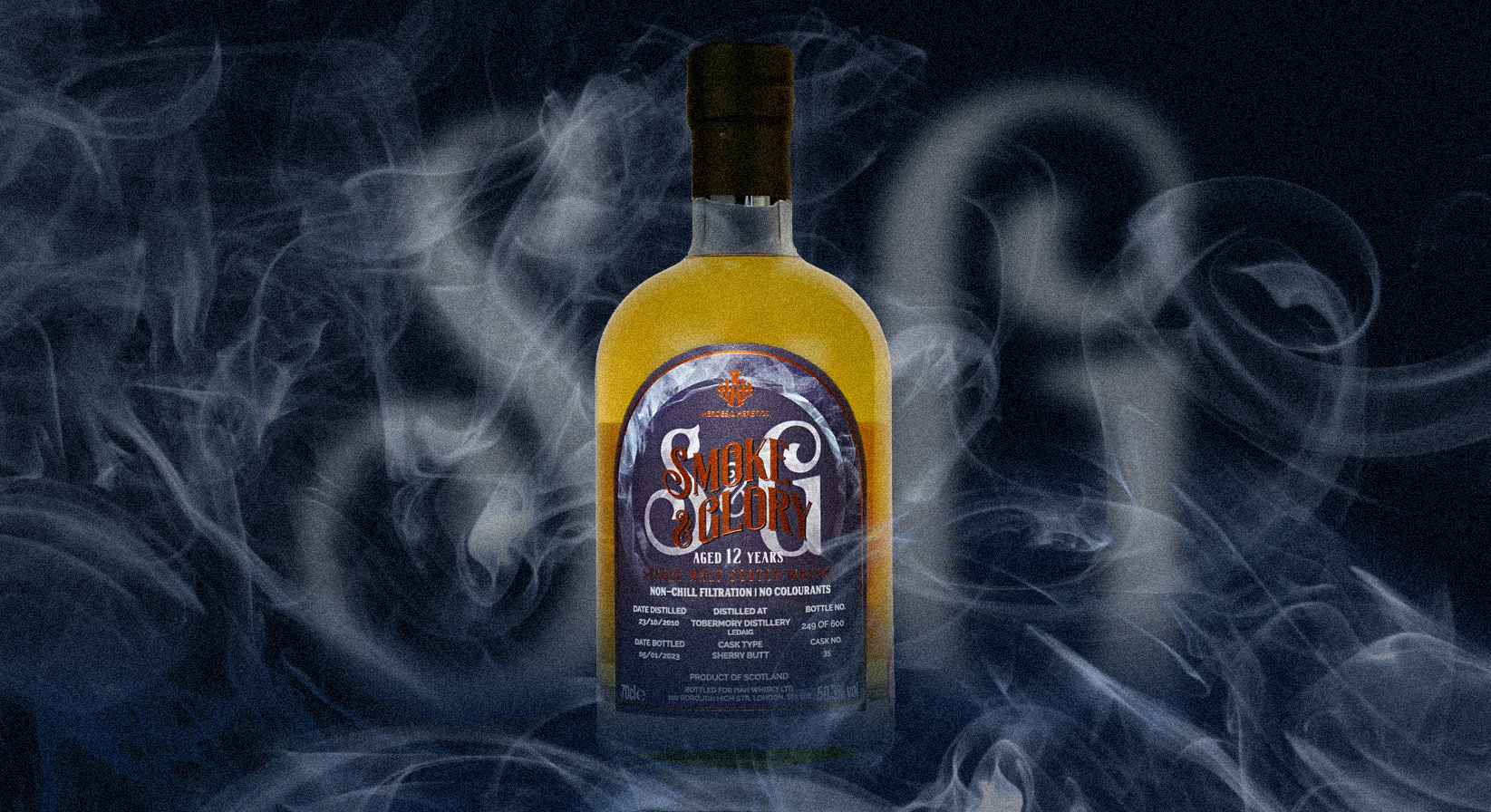I have a new-found love of Whisky and there’s a lot of it out there to choose from and (hopefully) enjoy drinking. It can be a little bit scary navigating a tasty and satisfying way through the amazing choices that are on offer.
There is a huge difference however between drinking whisky and tasting it. I have found this through trial and error (and many headaches). The brain has a fundamental difficulty in remembering tastes and flavours when dealing with alcohol. Not only is the memory degraded, the situation, setting and technical aspects of analysis, but all also vary and there are no controlled conditions to replicate the experimentation.
My scientific background and desire to get better (with no experience being self-taught) I have decided to share my journey of discovery and wisdom from research.
There is also the matter of how you should drink your whisky. Remember this a world of tradition and a whole heap of pretentiousness so it comes as no surprise that aspiring connoisseurs and (no experience necessary) fledgling whisky enthusiasts feel a certain pressure to drink whisky ‘correctly’ and to not break those unwritten rules.
It is, of course, your decision – you bought (or were given as a present) your whisky and you can drink it however you like. All the science and research is clear – the flavour is entirely subjective and whilst we share certain unifying characteristics, we all have our own personal preferences. You will love some drams, and some drams you will hate. Never expect to agree with everyone about every whisky and keep your own views (make some notes from the start).
There are two basic approaches you can use for tasting. The first is the non-scientific (but a lot more fun) subjective approach in which your appreciation is based solely on personal preferences and individual tastes. The second is the scientific objective approach or professional approach which is designed to assess the balance and quality of the spirit with as little personal bias as possible. This is for another blog and has huge levels of controversy and dispute – I advocate being more open and start with a desire to experiment and enjoy the process.
One are to start to the experiment is with the glass for your whisky – it can change the taste. The least appropriate is the traditional tumbler due to its large mouth, allowing the dissipation of the smells, aromas and fumes and the grip which encourages unwanted warming of the liquid. The generally accepted industry standard for whisky tasting glasses is tulip-shaped with a stem, such as a sherry glass. Try it and see the difference for the same whisky.
One rule I have adopted and you may wish to try is to always try it neat first. Before adding anything to your whisky dram, give it a try at its full strength first. All whiskies are unique and our perception of flavour fluctuates. Try not to make assumptions before tasting, some whiskies simply feel either milder or hotter than their ABV (alcohol by volume) would suggest, give them a try first just to see.
There are no whisky police officers and it is not a crime to add water. Almost all whisky has been diluted with water prior to bottling. Before going into a cask most whisky is diluted with de-mineralised water down to a consistent strength, normally around 63.5% ABV for single malt Scotch. When the whisky is ready to be bottled it will be diluted once more down to the bottling strength, most commonly 40, 43 or 46% ABV.
The only exceptions are cask strength whiskies which are bottled at the strength they were in the cask. Thus, adding more water once it is in the glass is an entirely normal and acceptable practice. Smell the whisky, taste the whisky, if it is too hot or intense for your palate then just add a few drops of water. If it is still too intense add a few more drops and keep going until you find your perfect balance.
There is where it gets interesting. By adding water to whisky changes its chemistry and will release different alcohols and aroma compounds into the air. In addition, as the alcohol becomes further diluted it reduces its dominance on the senses and will allow different and often more delicate characters to be appreciated.
The key here is to remember that you cannot remove the water again so go carefully. Once the water has been added to your drink, it cannot be removed without re-distillation, so be cautious when adding water. There are many stories describing how people have ruined a very expensive whisky by being overly zealous with the water. Just add a few drops at a time, you can always add more.
One of the most asked questions is whether you should have your whisky on the rocks (with ice). Whisky on the rocks has become a classic amongst serves. If it tastes better to you with ice then who can tell you otherwise? Just give it a try neat first however before going full Titanic on it. Adding ice to a whisky will gradually begin to dilute the whisky but will also obviously cool the temperature of the whisky.
As whisky begins to cool the molecules start to huddle together and the experience of flavour is reduced. This is useful when drinking something a little on the wrong side of the quality fence as many of the off-notes in the drink will be less noticeable. It is fine to chill a good quality drink but why hide those lovely flavours.
Experiment with situations and conditions (and make more notes). Try different types of water, glasses, location, music pairing, Scottish (or English) friends, food pairing… everything goes! Whisky is exciting and should not be restricted to flavour traditions and being boring. The difference between loving and hating a whisky can simply be the setting.
The whisky world is full of complex and often confusing adjectives about one person’s flavour experience and whilst being fun these can be off-putting to many whisky no experience necessary drinkers. The only thing you really need to know is, ‘do you like it?’ (or not) and not to be put off by the ‘terms’.
So where to start on being slightly more scientific? I like to look at my whisky – really look. Try holding your whisky glass is held at a 45-degree angle, often against a white background, to give a clear view through the spirit. The depth of colour is largely determined by the cask the whisky has been conditioned in: Spanish and European oak tends to impart far more colour than American White oak. A light colour might also indicate a cask which has been re-used several times. A golden colour could be the result of an ex-Bourbon cask while a sherry cask will give the whisky a copper colour. But the colour may also give clues as to the age of the whisky, the maturation that the spirit has had and whether any artificial colours have been added. In the latter case, however, the aroma of caramel often used to colour the whisky, is likely to be detectable.
Then there is the more scientific aspect of smell (yet there is a huge debate about the science of this). Do not be put off by the terms. Here are some of the aromas you might detect (remember to make notes as you go):
- Floral (flowers/perfume/dried/fresh)
- Fruity (citrus/dried/fresh/berries/orchard/confectionery)
- Green grassy (vegetation/gardens/trees/woodland)
- Solventy (pear drops/hair spray/fermenting fruit)
- Soapy (synthetic/hand soap/detergents)
- Sweet (vanilla/fruity/baking/sweets/natural sugars/floral)
- Cereals (grains/popcorn/bread/biscuits)
- Woody (balsa/pine/oak/sawdust)
- Nutty (coconut/almonds/toasted nuts/cocoa)
- Spicy (dried spices/hot spice/floral spice/aromatic)
- Oily (buttery/oily/waxy)
- Sour (tart fruit/vinegar/cheese)
- Bitter (tannins/coffee/tree bark/citrus pith)
- Sulphury (eggs/rubber/burnt)
- Stale (farmyard/compost/rubbish bin)
- Peaty (smoky/medicinal/burnt/tar)
- Feinty (leathery/earthy/tobacco)
The Flavour Map
For those of a more rigorous mind-set, probably the most popular detailed representation of whisky flavours in recent years has involved plotting whiskies on a two-dimension grid, typically for some measure of intensity versus flavour. Below is an open-source image for some of the data, available through Wikipedia:

Please have a great time on the journey (and drink responsibly) and don’t let people tell you how it should taste and how you should drink it – please come to your own conclusions.
Enjoy.



You must be logged in to post a comment.